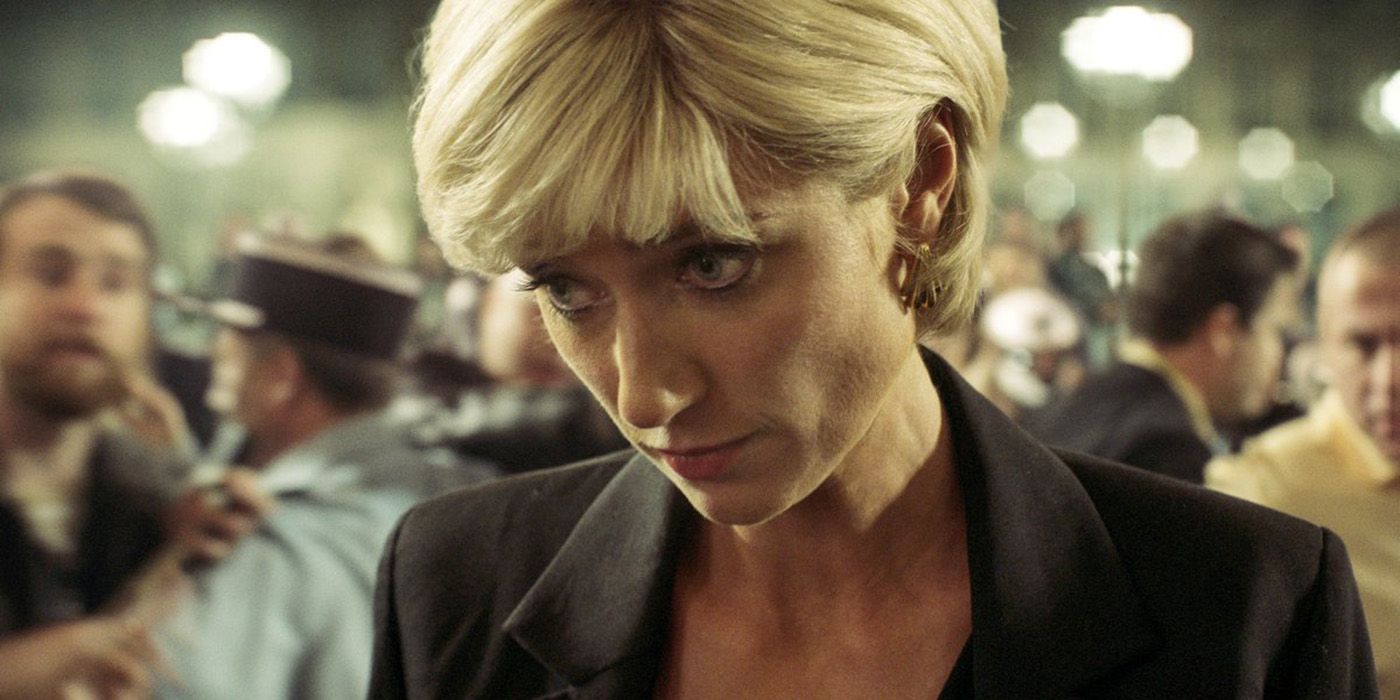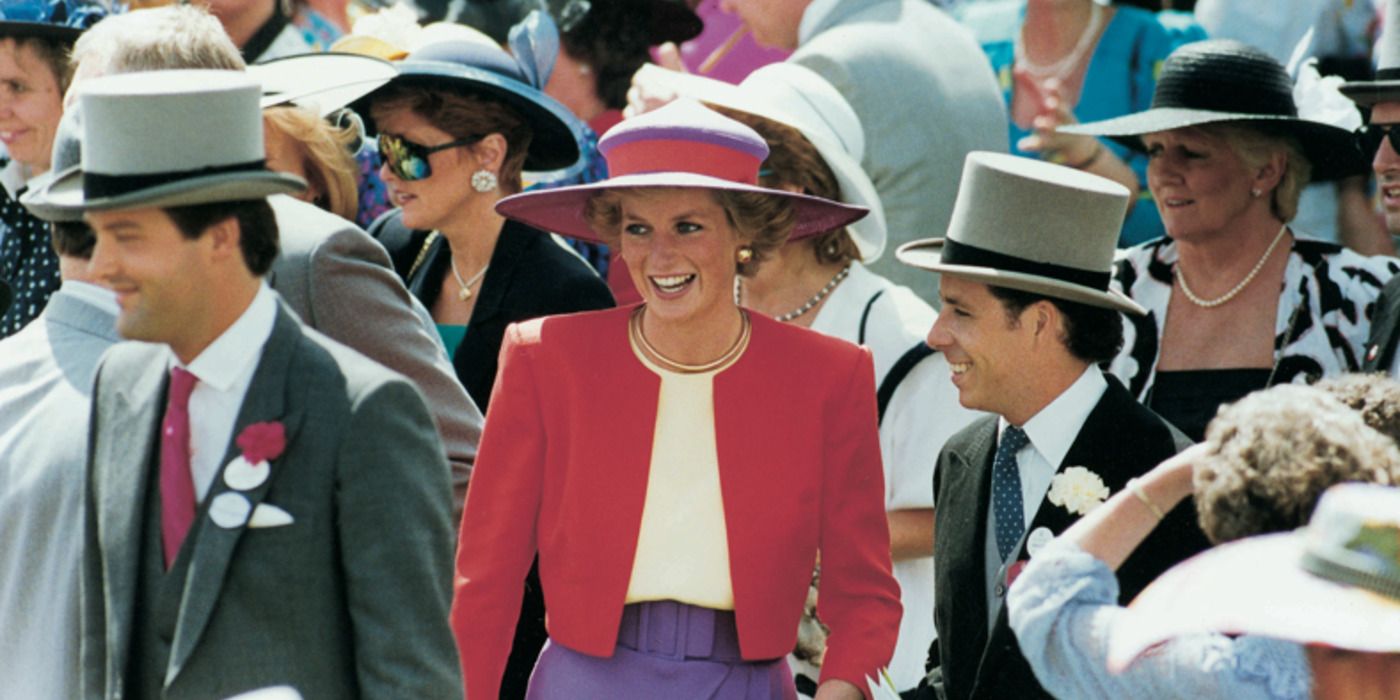Editor’s note: The below contains spoilers for Season 6 Part 1 of The Crown.
The Big Picture
- Season 6 of The Crown focuses on the emotionally difficult arc of Princess Diana’s death, aiming to respectfully depict her final moments.
- Princess Diana tragically passed away in a car crash in 1997, leaving the world in grief. The media’s obsession with her contributed to the accident.
- Diana’s death led to changes in the British media, with stricter press regulations put in place. However, paparazzi invasion of privacy continues to be an issue.
The Crown’s last season has come out from behind the curtains with its pivotal, final bow. Part 1 of the sixth season focuses on the show’s most emotionally difficult arc yet — the death of Princess Diana (Elizabeth Debicki). The Crown is known for being a dramatized depiction of the lives of the Royal Family and has earned its share of criticism over these depictions since its initial premiere in 2016. The previous seasons have brought longtime fans through a whirlwind of vulnerable recounts of Diana’s life. From a fairytale wedding to becoming a loving mother, a victimized divorcée, and the world’s most photographed person, the prestigious series has a lot of pressure on its hands to make up for losing its lack of luster by respectfully depicting Diana’s final moments in the world.
In 1997, Diana, Princess of Wales tragically passed away alongside her boyfriend Dodi Fayed as the result of a car crash in a tunnel at Place de l’Alma in Paris, France. Her shocking death plunged the world into a grim period of grief, leaving mourners with bittersweet memories of her pure kindness and big heart. In recent years, The Crown has received numerous amounts of mixed-to-negative reviews from critics and fans for its historical inaccuracies. Of course, the once-respected series is not able to extensively cover the real aspects of Diana’s death or explain all the theories behind the accident. However, while the Emmy award-winning show does its best to revisit the emotions tied around the loss of such an important figure, it is vital to tell the truth behind Princess Diana’s tragic passing.
The Crown
Follows the political rivalries and romance of Queen Elizabeth II’s reign and the events that shaped the second half of the 20th century.
- Release Date
- November 4, 2016
- Cast
- Elizabeth Debicki, Dominic West, Imelda Staunton, Jonathan Pryce, Lesley Manville, Claire Foy, Olivia Colman, Helena Bonham Carter, Vanessa Kirby
- Main Genre
- Biography
- Genres
- Biography, Drama
- Rating
- TV-MA
- Seasons
- 6
- Studio
- Netflix
What Was the Real Cause of Princess Diana’s Death?
Constantly scrutinized in the public eye, the Princess of Wales did not lead a relatively happy life even up to her death. After her divorce from Charles III (Dominic West), now the King of the United Kingdom, in 1996, Diana derived joy from charity work (she was an advocate for AIDS patients and landmine removals in developing countries, as depicted in Season 6 of The Crown) and spending quality time with her sons, William (Rufus Kampa) and Harry (Fflyn Edwards). Despite no longer being considered a member of the Royal Family, Diana was still globally adored and considered a fashion icon. The Royal Family was often outshined by Diana’s presence in the media. According to the BBC, wherever she went, on public or private business, often with her children, the paparazzi were there to document her appearance.
During the summer of 1997, Diana and her boys were invited to Mohamed Al-Fayed’s (Salim Daw) St. Tropez villa where Al-Fayed’s son, Dodi (Khalid Abdalla), made an appearance as well. Dodi and Diana grew fond of each other and began pursuing a romance, which the media entered into a frenzy to capture via photograph. In what was said to be a mere six-month romantic affair, Diana and Dodi were constantly followed by the paparazzi. On August 30, 1997, the couple flew from Sardinia to Paris to spend some time together before Diana’s intended reunion with her sons in London the following day. The two planned to eat dinner at Chez Benoit around 9:30 PM, but ended up dining privately in the Imperial Suite of the Ritz in order to avoid the paparazzi. After midnight, they left the Ritz for Dodi’s apartment.
Diana, Dodi, and Diana’s bodyguard, Trevor Rees-Jones (Harry Anton), drove off in a decoy car from the back entrance of the Ritz with hopes of losing unwanted attention from photographers. They were driven by Henri Paul (Yoann Blanc), the head of the Ritz’s security, in a Mercedes S280 car. Rees-Jones was the only one in the car wearing a seatbelt. As depicted in Episode 3, “Dis-Moi Oui,” Paul was indeed driving under the influence (which his autopsy report later confirmed). The car was immediately tailed by a handful of paparazzi and press motorcyclists through the streets of Paris. The Mercedes was then said to have passed the 30 mph speed limit, soaring well above 60 mph. Around 12:25 AM, the car entered the Pont de l’Alma tunnel, where Paul lost control of the vehicle and struck a pillar under the tunnel. In an article detailing the deathly crash, AP reported:
“Seconds later, there was a huge crash — witnesses said it was like an explosion. It would soon reverberate around the world, but for a few minutes in the still night, there was only the insistent blare of a car horn set off by the driver’s slumped body, and then the clicking of camera shutters”.
Paul and Fayed were pronounced dead at the scene. Stephane Darmon, a motorcycle rider for one of the paparazzi who chased the couple’s Mercedes through Paris, was one of the first eyewitnesses at the scene. Per The Guardian, two other witnesses, Antonio Lopes-Borges and Ana Simao, testified to having seen paparazzi climb onto the Mercedes and take more pictures instead of helping the passengers inside the vehicle. Several photographers were taken into custody after the crash under suspicion of gross negligence. A documentary titled Investigating Diana: Death In Paris discusses the theory of a white Fiat Uno colliding with the Mercedes and exiting the tunnel, though 25 years later, the driver and the car in question have never been found.
Firefighters arrived at approximately 12:40 AM and removed Diana from the wreckage of the car. She went into cardiac arrest and was taken to the Pitié-Salpêtrière Hospital, although Hotel-Dieu was said to have been closer for Diana to receive treatment. The Princess of Wales was declared dead at around 4 AM on August 31, 1997, at the age of 36. Sergeant Xavier Gourmelon, a first responder on the scene, said Princess Diana’s last words were, “My God, what’s happened?”
Princess Diana’s funeral was held on September 6, 1997, but the public grew weary over the Royal Family’s slow response time in addressing not only the grief-stricken United Kingdom but the heartbreak felt worldwide. Five days later, Queen Elizabeth II finally released a speech broadcast to the nation: “I want to pay tribute to Diana myself. She was an exceptional and gifted human being. In good times and bad, she never lost her capacity to smile and laugh, nor to inspire others with her warmth and kindness.” Although Diana was not considered a member of the Royal Family, the “People’s Princess” did receive a ceremonial funeral at Westminster Abbey that was attended by 2,000 people and watched by over 2 billion people worldwide — one of the biggest televised events in history. That same day, she was buried at her childhood home of Althorp.
The loss of Diana impacted millions of people. Soon, the public turned against the British media and the paparazzi, demanding changes to be made. Top publishing tabloids like The Sun and The Mirror recorded a record low in sales, inspiring The Daily Mail to promise not to utilize paparazzi photos in its pages. This promise was never kept. In 1998, TIME recounted that the Press Complaints Commission (PCC) enhanced its Editor’s Code of Practice to create what it called the “toughest set of press regulations anywhere in Europe.” Photographers were no longer allowed to use long lens cameras to take photographs of “people in private places” without their consent. After Diana’s death, William and Harry continued school between ages 15 and 12. The protection of the Code had to be extended to all children while they were in education, but photographers came back to circle around the Princes after they left school.
As recent years have shown, the media continues to invade the privacy of both Prince William’s and Prince Harry’s private lives. Despite the efforts for change, the paparazzi seem to have not learned their lesson from Diana’s victimization as a result of the media’s invasiveness. Prince Harry and his wife Meghan, Duchess of Sussex have experienced a similar situation, leading Prince Harry to step down from his royal duties and move the family to Montecito, California.
Part 1 of The Crown has faced backlash for the inclusion of Diana’s “ghost,” which appears to both Charles and Queen Elizabeth. These bold scenes were creator Peter Morgan‘s creative attempt to depict the event’s long-lasting effects on the Royal Family — a decision that did the season more harm than good. Princess Diana’s death will forever haunt history no matter what generation stumbles upon her heartbreaking story. Many conspiracy theories revolve around Diana’s passing, but what stands true is that she was endangered by the lack of protection she was not given after her separation from the Royal Family and the harassment inflicted on her by the ruthless paparazzi culture.
The Crown is available to stream on Netflix in the U.S.
Watch on Netflix
Source link


